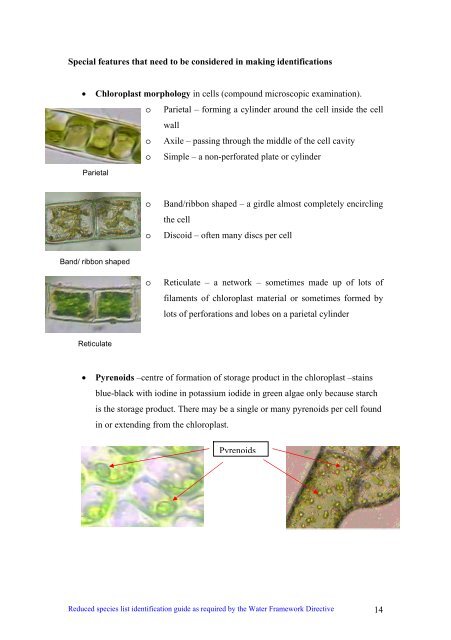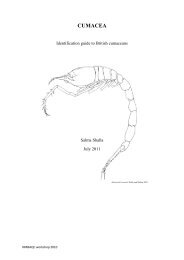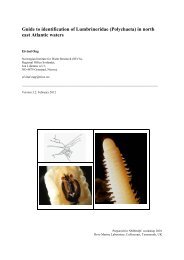s A Field Guide to the British Seaweeds - NMBAQC
s A Field Guide to the British Seaweeds - NMBAQC
s A Field Guide to the British Seaweeds - NMBAQC
Create successful ePaper yourself
Turn your PDF publications into a flip-book with our unique Google optimized e-Paper software.
Special features that need <strong>to</strong> be considered in making identifications<br />
• Chloroplast morphology in cells (compound microscopic examination).<br />
Parietal<br />
Band/ ribbon shaped<br />
Reticulate<br />
o Parietal – forming a cylinder around <strong>the</strong> cell inside <strong>the</strong> cell<br />
wall<br />
o Axile – passing through <strong>the</strong> middle of <strong>the</strong> cell cavity<br />
o Simple – a non-perforated plate or cylinder<br />
o Band/ribbon shaped – a girdle almost completely encircling<br />
<strong>the</strong> cell<br />
o Discoid – often many discs per cell<br />
o Reticulate – a network – sometimes made up of lots of<br />
filaments of chloroplast material or sometimes formed by<br />
lots of perforations and lobes on a parietal cylinder<br />
• Pyrenoids –centre of formation of s<strong>to</strong>rage product in <strong>the</strong> chloroplast –stains<br />
blue-black with iodine in potassium iodide in green algae only because starch<br />
is <strong>the</strong> s<strong>to</strong>rage product. There may be a single or many pyrenoids per cell found<br />
in or extending from <strong>the</strong> chloroplast.<br />
Pyrenoids<br />
Reduced species list identification guide as required by <strong>the</strong> Water Framework Directive 14




